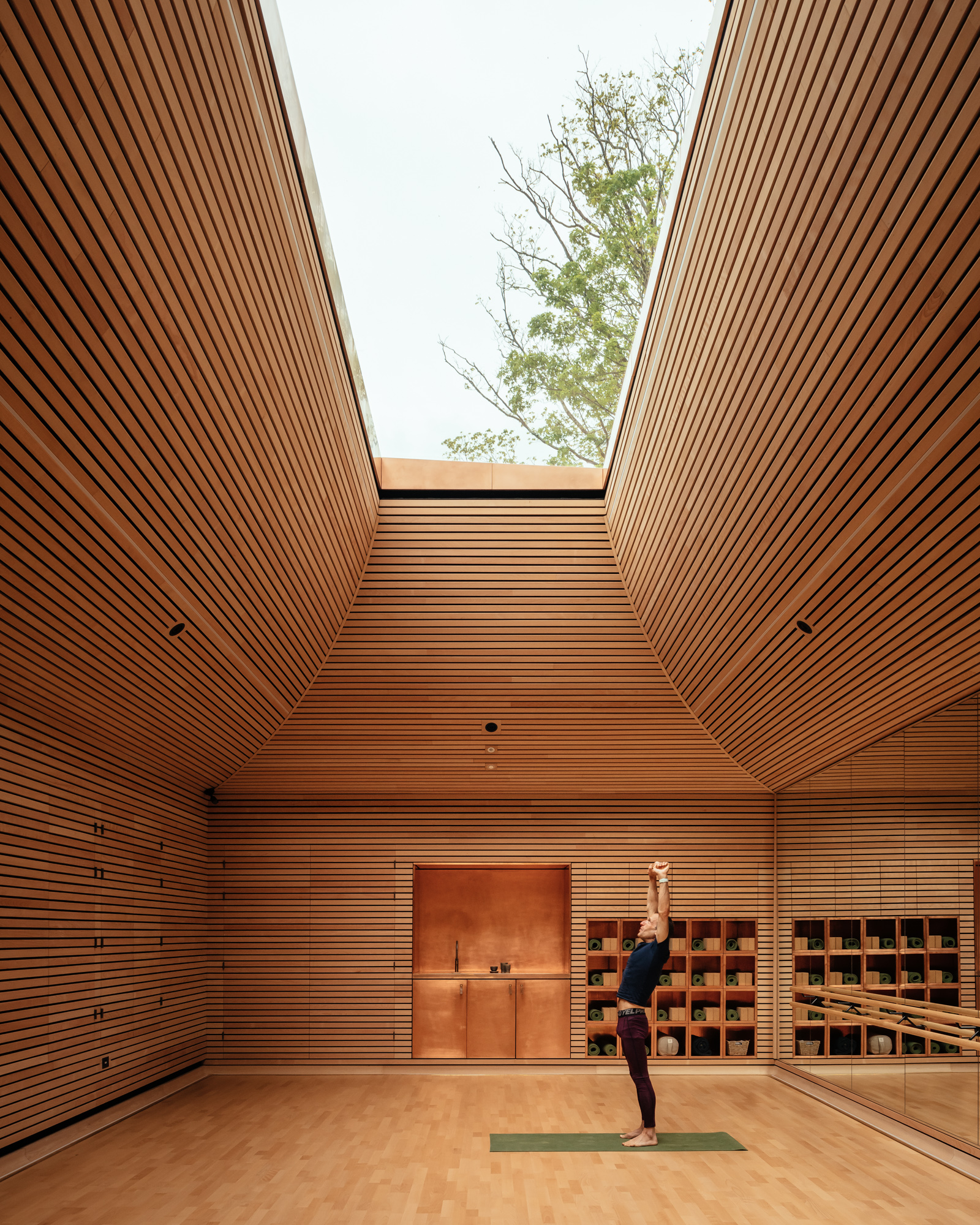The Yoga Studio is the latest of three buildings at The Newt in Somerset hotel, designed by architects, Invisible Studio. Displaying the architect’s reputation for innovative and unusual design, the building was constructed on a JCT Intermediate Building Contract.
The Newt in Somerset’s new Yoga Studio joins a recently installed gym and lakeside apiary (known as the Beezantium) created for the hotel by Invisible Studio, the architects founded by Dr Piers Taylor, co-presenter of BBC series The House That £100k Built and The World’s Most Extraordinary Ordinary Homes. Across the three buildings is a shared approach to material choice and design, which not only reflects Invisible Studio’s philosophy regarding simplicity, function, and sustainability, but also nods towards The Newt’s original Georgian limestone construction and colour palette.
The Yoga Studio (as with the gym) uses a rammed stone construction. The stone used is a local Hadspen limestone with a distinctive red hue that ties in with the main hotel building. Crushed from 45mm to dust, the stone is combined with a specially constructed binder. The project team worked with the Material Science Lab at the University of Bath to experiment and establish the correct combination, which is a lime/GGBC/cement mix. The stone was mixed on site and poured by bucket into the formwork. Stainless steel tubes in the wall ventilate a Surecav formed cavity. The external wall is tied back through the Surecav to a ply sheathing fixed to an internal stud wall.
The striking feature of the rammed stone exterior is the way that the roof meets it with no overhang. The roof membrane is installed over the parapet at the top to protect it but is held back from the edge just enough to conceal it. The exposed portion is further protected by a shelter coat. The copper detailing of the roof echoes the materials used for the apiary and, as it ages, compliments the slate seen elsewhere on the hotel’s other buildings.
Natural light and the choice and positioning of windows is an important design feature of all three of the new buildings. The gym, for instance, is oriented to its view of the garden via the use of a huge window. The Yoga Studio however, focuses light in through the ceiling via a massive 11m long rooflight made of a single double-glazed unit. From the interior the funnel-like way that light is drawn into the space contributes to its spa-like atmosphere. The feeling of warmth and tranquillity is intensified by the uniform colour scheme of beech slats which line the walls from floor to ceiling.
Invisible Studio is well known for the way it combines form and function, often with low cost or reused materials. Operating out of its self-built studio in a working woodland near Bath, it has created a low-cost micro-home made from wood and recycled materials, and a model-making workshop with a timber frame and fibreglass panel cladding, amongst many other structures.
The Yoga Studio encapsulates the aim of incorporating local materials, connecting with the landscape and existing architecture and utilising a limited palette to maximum effect. This is further supported by the use of the JCT Intermediate Building Contract, which is ideal for a project of this scale where there is a certain level of complexity and flexibility required. It provides a familiar and reliable set of terms which allow a modern and striking project to be delivered.
Project Data
Start: July 2021
Completion: April 2022
Gross internal floor area: 100m²
Gross (internal + external) floor area: 110m²
Contract: JCT Intermediate Building Contract
Architect: Invisible Studio
Client: Emily Estates
Main contractor: Ken Biggs
Structural engineer: Hydrock & GLASS
M&E consultant: E3 Consulting
Quantity Surveyor: Currie & Brown
Principal designer & CDM co-ordinator: Hookway Partnership
CDM co-ordinator: Hookway Partnership
Approved building inspector: Local Authority
CAD software: MicroStation
Images: Jim Stephenson

